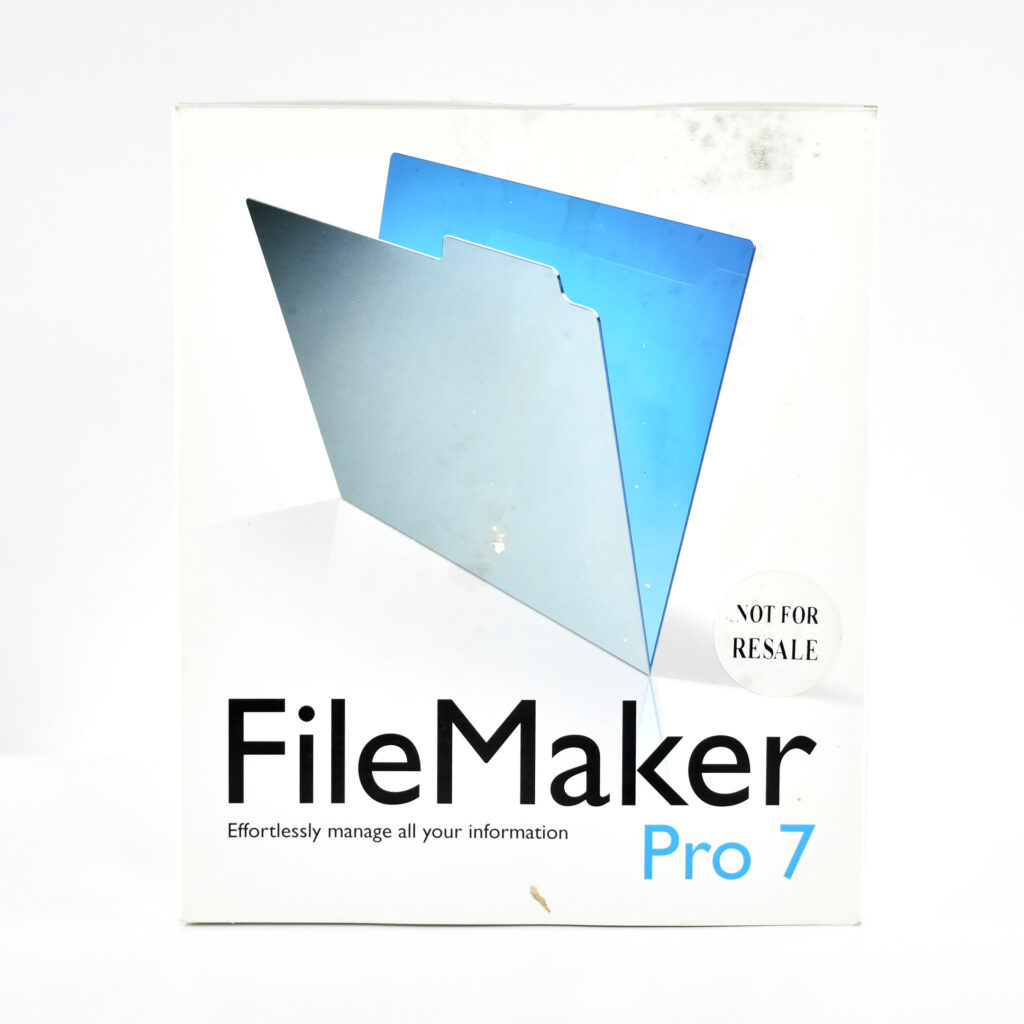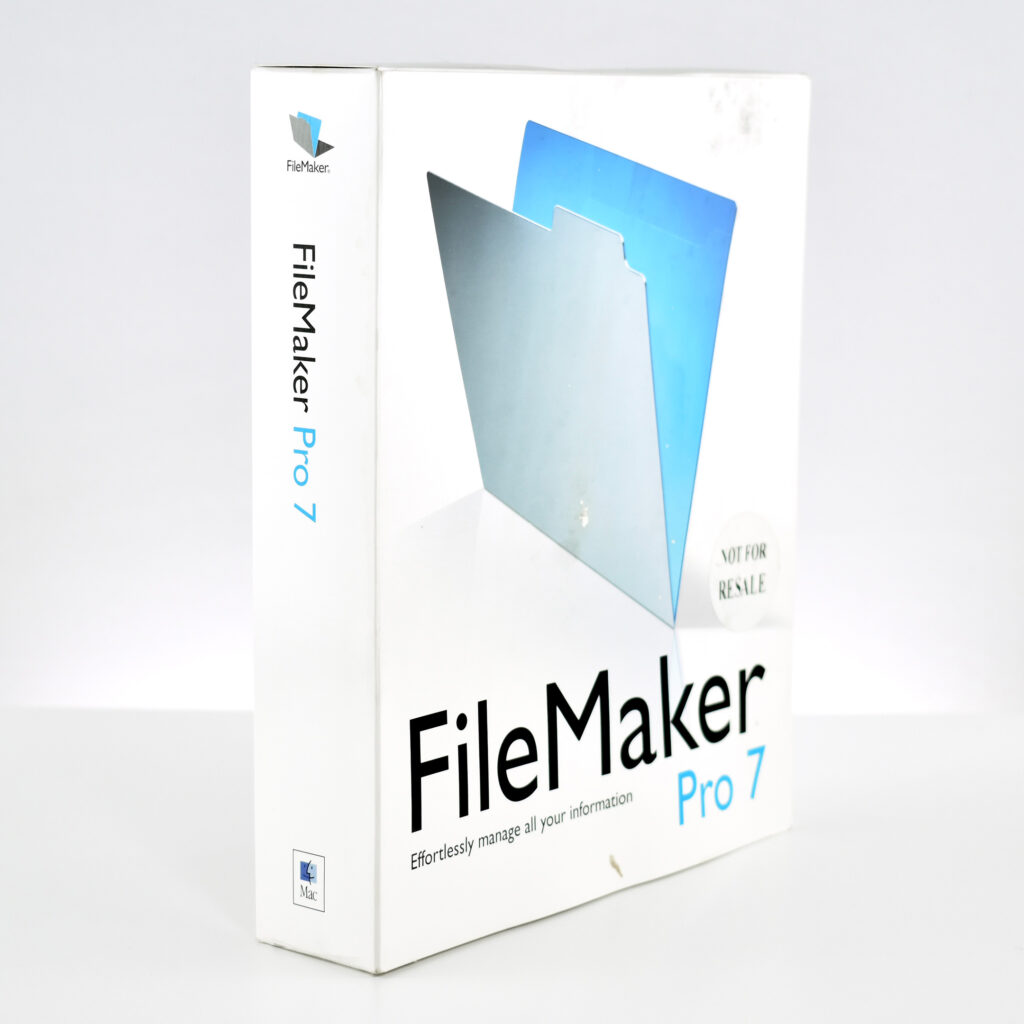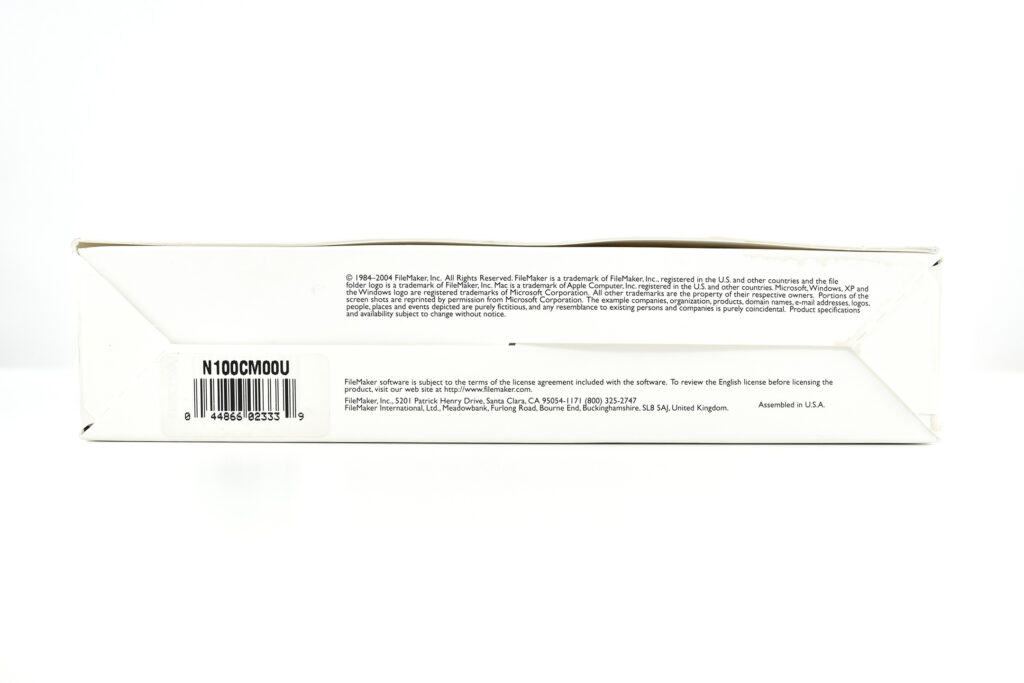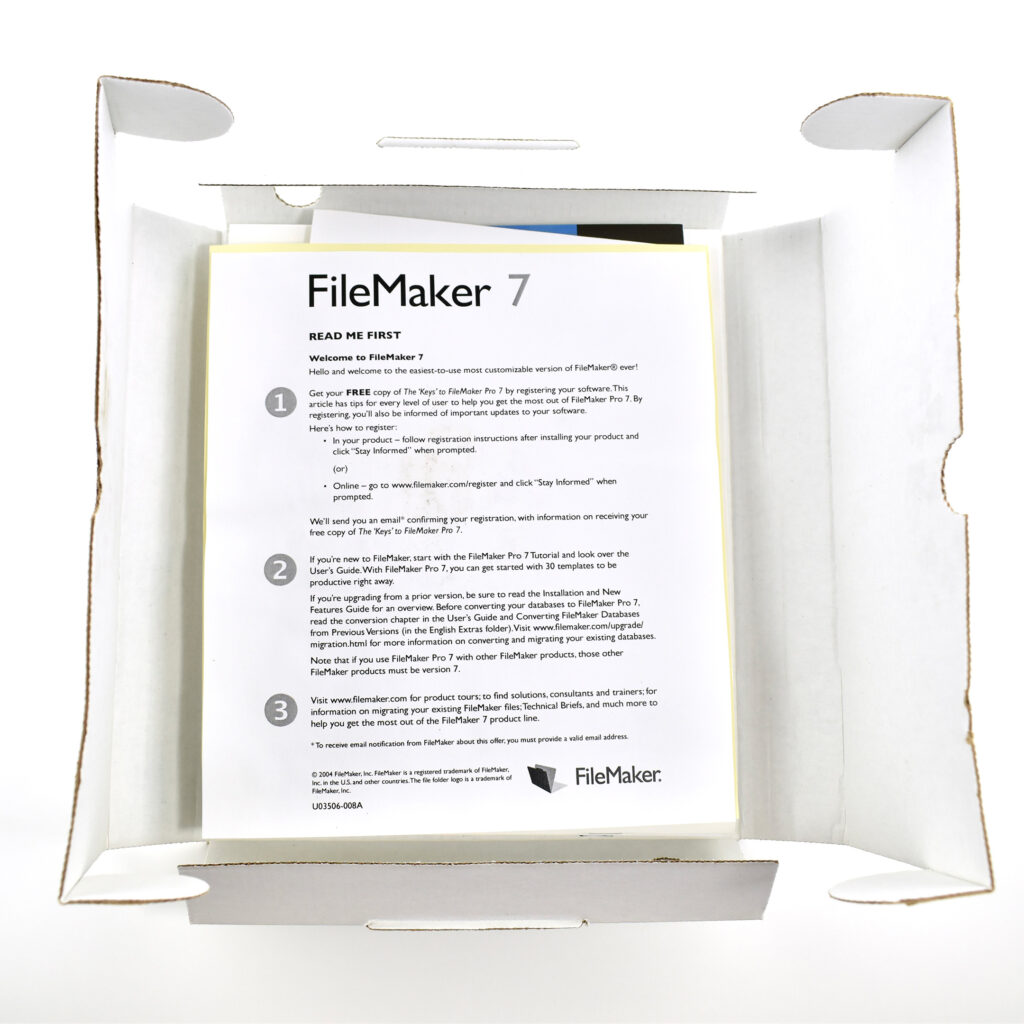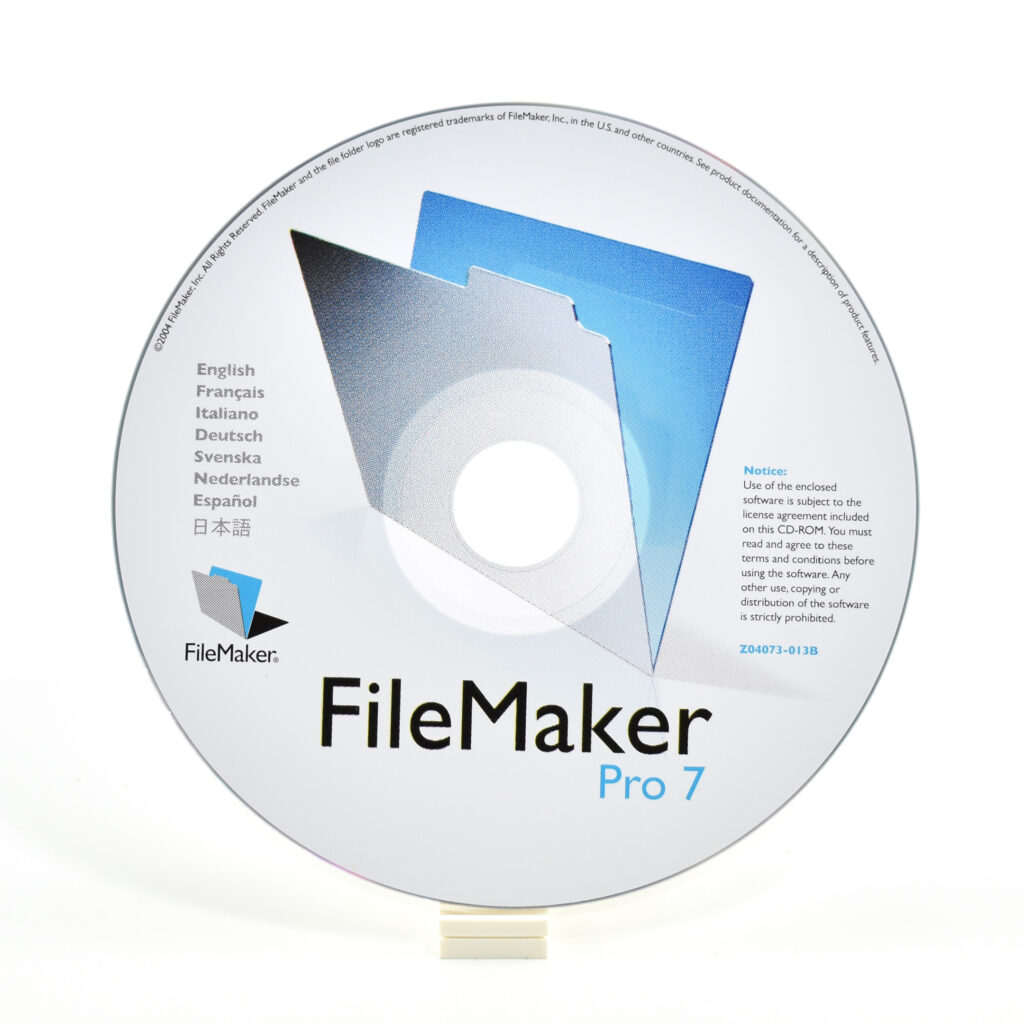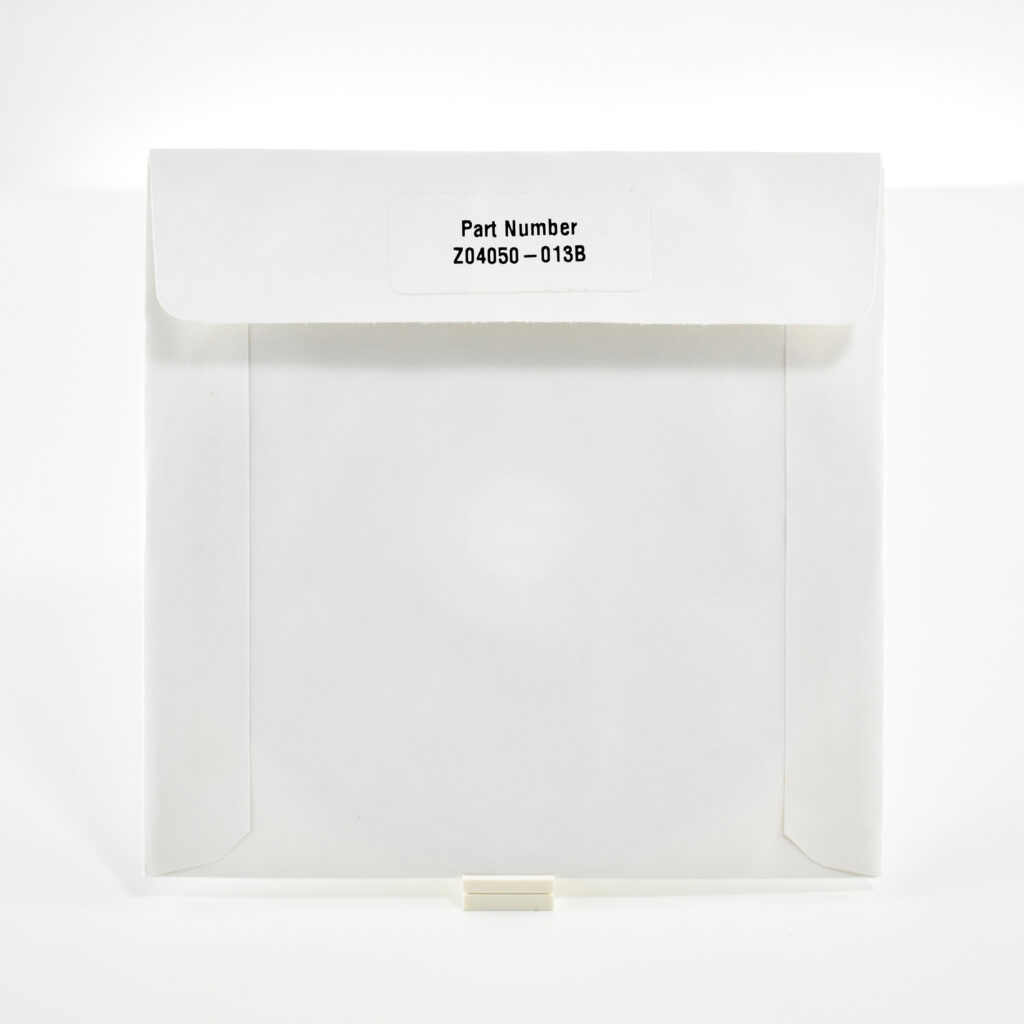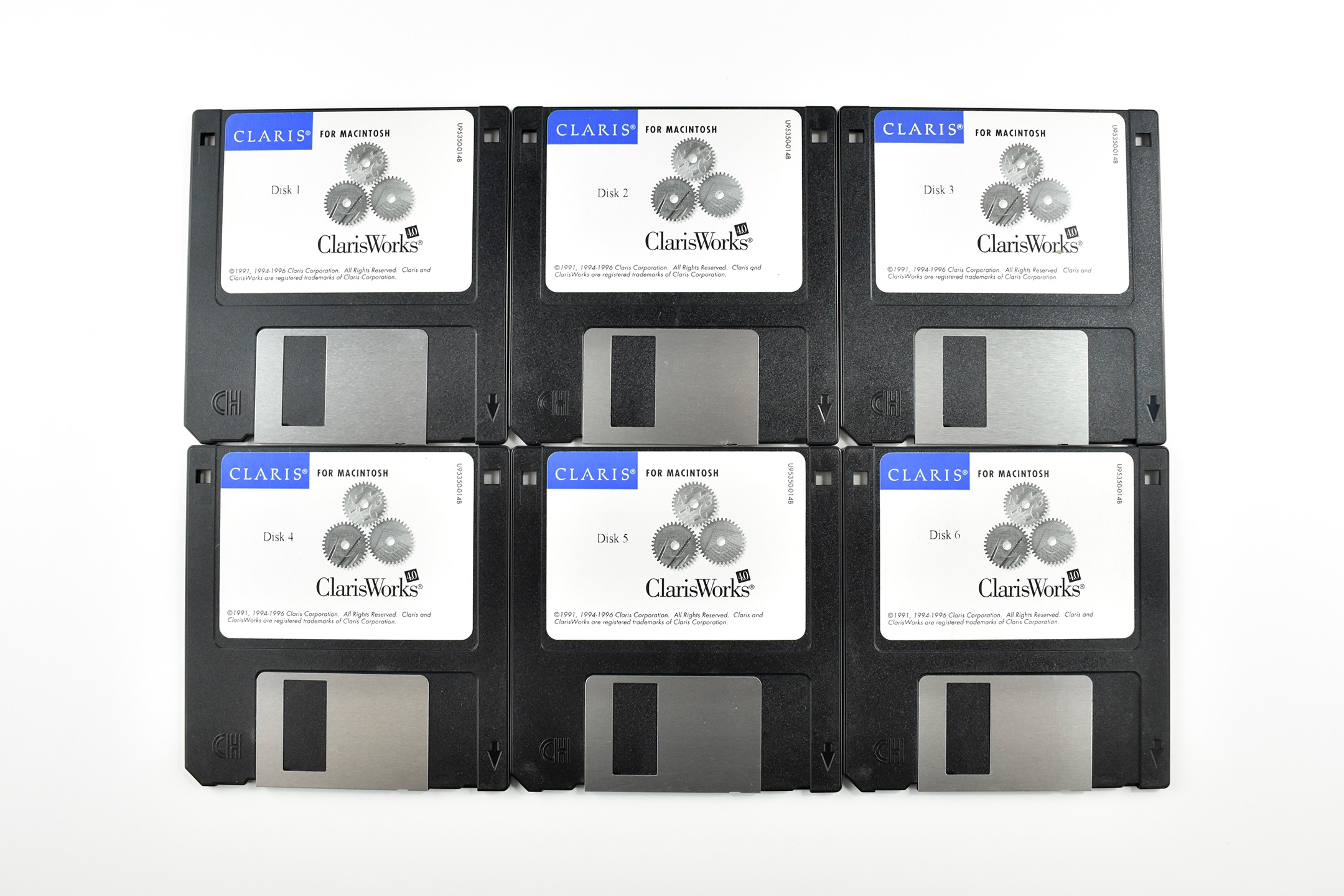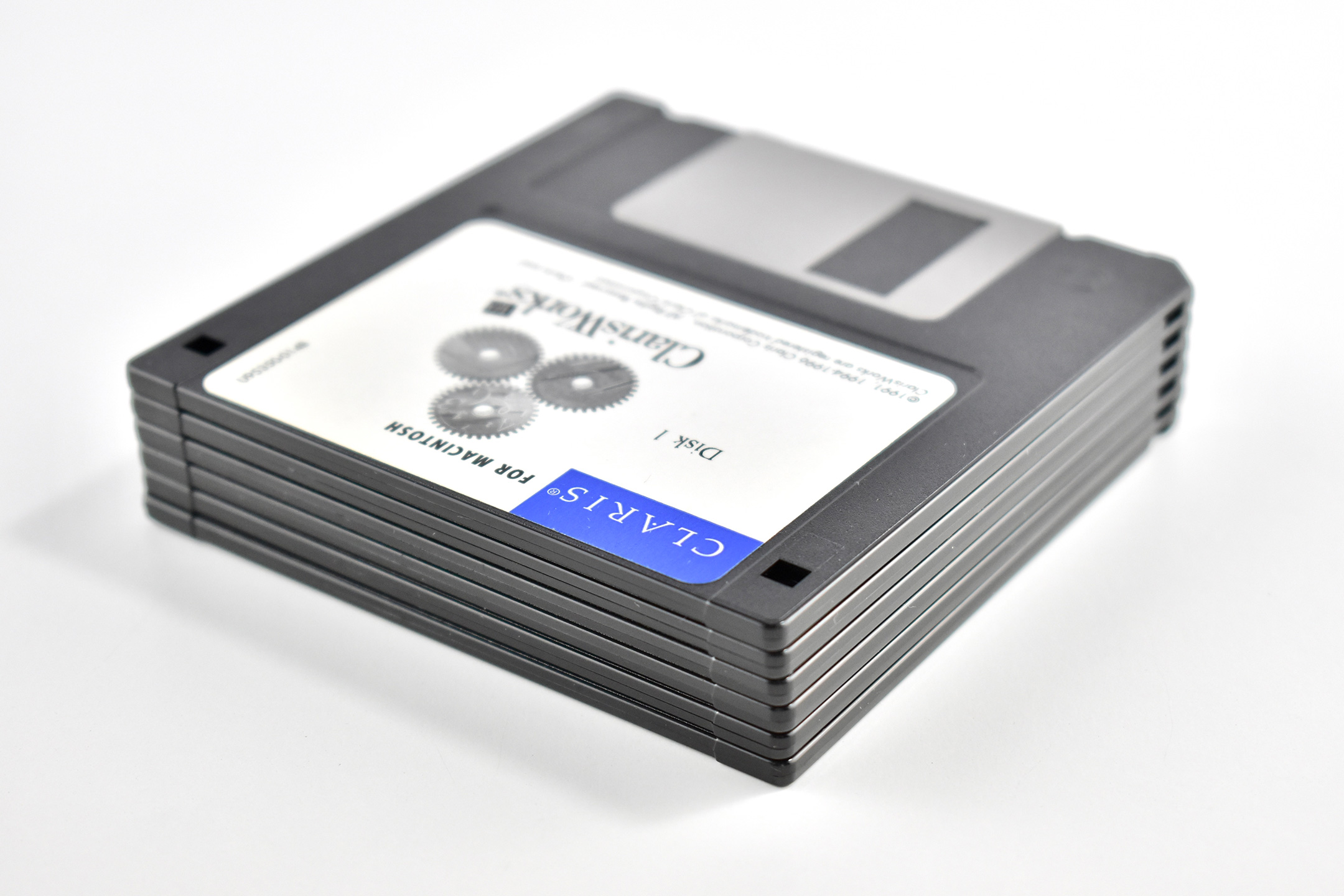The FileMaker database application (in various forms) has been owned by Apple since the late 1980s, first as a product in Apple’s “wholly owned subsidiary” Claris, then as a separate company called “FileMaker, Inc.,” and (coming full-circle) in 2019 “FileMaker International Inc.” changed its name back to “Claris” as “Claris International Inc.”
As of 2023, the Claris “About Us” website declares, “Claris is the leader in workplace innovation.” A black Apple logo is displayed prominently on the page with the words “Claris, an Apple company.”
When this software box was produced in 2004, the company was called “FileMaker, Inc.” At version 7, FileMaker Pro was described as:
“the world’s leading workgroup database software, combines legendary ease-of-use with rich new features to help you get organized quickly and painlessly. With FileMaker Pro 7, you can create robust business database solutions in minutes, and instantly share them with your team or your customers over your intranet or the web with legendary Instant Web Publishing. For managing people, projects, processes, and information, FileMaker Pro 7 has everything you need to instantly turn your ideas into productive, creative, and scalable solutions.”
This box contains a Not for Resale FileMaker Pro 7 install CD, the FileMaker Pro 7 User’s Guide, a FileMaker Pro 7 Tutorial, licensing agreements, and various brochures and advertisements for add-on products and services.
The CD installer is part number Z04073-013B.
Source: Claris
